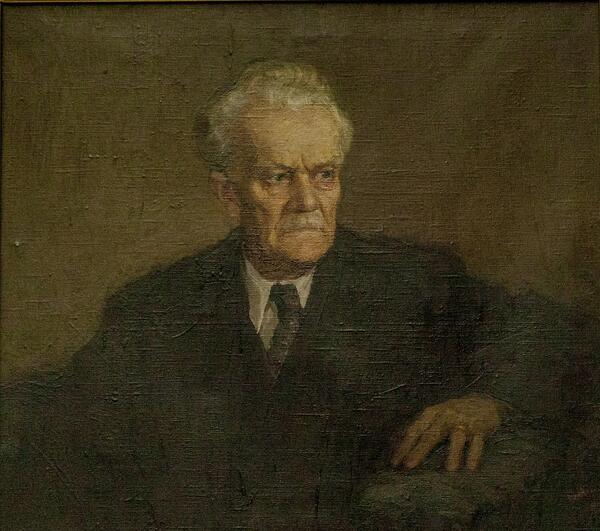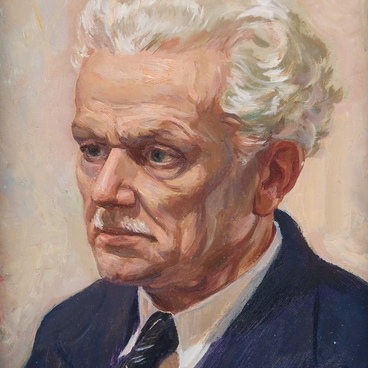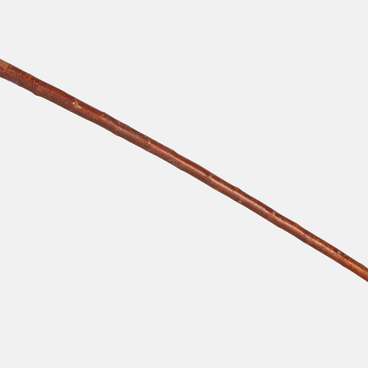Fyodor Mitrofanovich Konyakhin, a Soviet painter and graphic artist, member of the Union of Artists of the USSR, was born on January 7, 1923 in the village of Shishkovka, Voronezh Region. He graduated with honors from the Surikov Moscow State Art Institute.
Konyakhin was able to get an art education only after the end of the Great Patriotic War. Fyodor joined the troops on October 16, 1941, and ended the war with the rank of senior lieutenant. For his courage he was awarded the medals “For the Defense of Moscow”, “For the Victory over Germany” and the 2nd class Order of the Patriotic War.
Fyodor Konyakhin mainly painted portraits and thematic paintings, following the realistic trend. He often participated in all-Union, zonal and regional exhibitions. The artist’s works are stored in the Museum of the Revolution, the Russian National Museum of Music, the State Museum of the Defense of Moscow, and the museum of the Chardakhly town.
Konyakhin spent almost all his life in the city of Podolsk, Moscow Region, where he created his main paintings. According to researchers, one of his iconic works is the portrait of Alexander Goldenweiser. The brilliant pianist is depicted sitting in a deep armchair. The absence of a bright backdrop and objects in the background allows the viewer to focus on the main character. As if in a Rembrandt painting, the composer’s face is emphasized with light, standing out against the background of muted dark shades. Carefully examining every feature of the musician’s face, the viewer notices a kind and very cordial person behind the façade of severity. All his life Goldenweiser, who shared the views of his friend Leo Tolstoy, was eager to help his friends and acquaintances without asking anything in return.
The sitter seemed to be carried away by his memories: Alexander Goldenweiser was born in 1875 and witnessed important historical events. He lived in a period of transition when the monarchy collapsed and was replaced by a communist society. In this difficult time, Goldenweiser realized how important it was to enlighten young people and played an important role in the development of the Soviet piano school. A deep wrinkle between the eyebrows above the bridge of the nose is a sign of intense mental activity. A man of encyclopedic knowledge, he believed that while teaching others, you must constantly learn yourself. His appearance, the expression of his face and the position of his hand expose his decisive character and inner strength.



